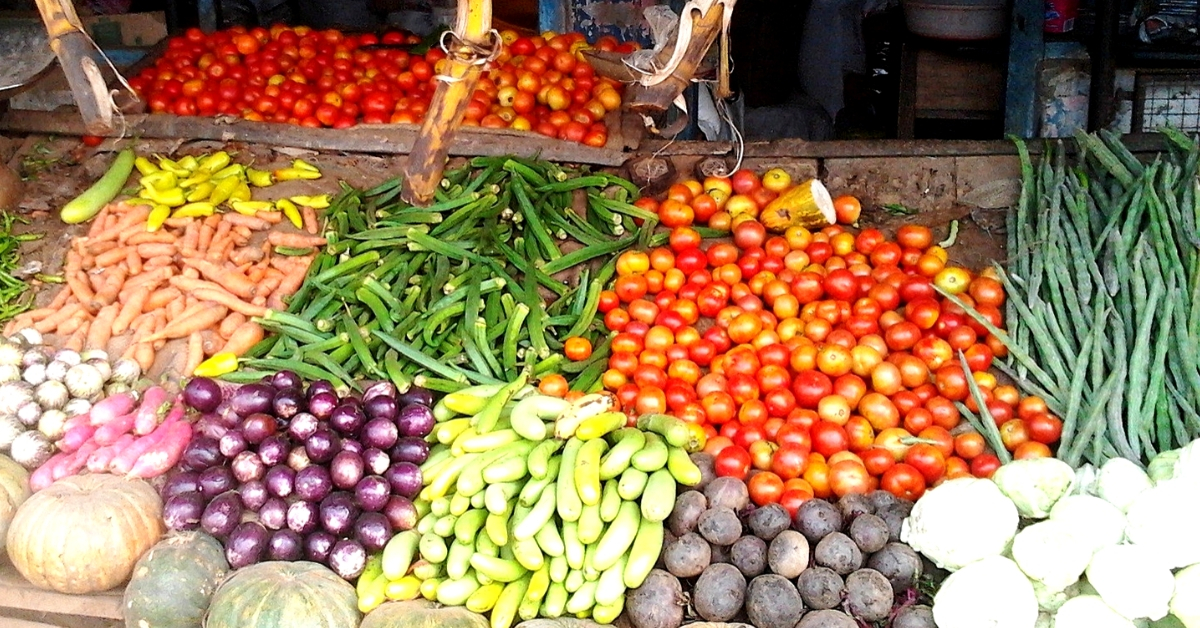Worried By The Sharp Swings in Veggie Prices? Govt Clears Rs 500 Cr Plan To Control It!
Tired of vegetable prices going up and down seemingly at random? Here's how Operation Green will address this issue.

Stabilising the prices of essential vegetables like tomatoes, onions and potatoes is critical for both farmers and consumers. While farmers seek remunerative prices for their produce, consumers want to buy it a price that doesn’t burn a hole through their pockets. In this year’s Budget speech, Finance Minister Arun Jaitley had proposed an initiative, ‘Operation Green,’ for this purpose.
“My Government proposes to launch an ‘Operation Green’ on the lines of ‘Operation Flood’ [started in the 1970s to increase milk production]. ‘Operation Green’ shall promote Farmer Producers Organizations (FPOs), agri-logistics, processing facilities and professional management. I propose to allocate a sum of Rs 500 crore for this purpose,” Jaitley said.
The objective of Operation Green is to ensure that the prices of these essential, yet perishable, vegetables are not subject to erratic fluctuations. In the past, we have seen their costs swing between spells of high inflation or rock bottom, angering farmers and consumers depending on which side the price-pendulum swings. Nine months after Jaitley first proposed this initiative, the Rs 500-crore project was finally cleared earlier this week.

Here are five things you should know about the scheme.
1) In 23 hubs identified by the government across 20 states, the government will spend on improving storage and food-processing infrastructure to increase the shelf life of these perishable vegetables.
2) The second critical component of Operation Green is to ensure the swift transport of these essential vegetables from states with a surplus to those with a deficit via road and rail transport. Building the necessary infrastructure could take more than a year.
For example, under the scheme, Kolar and Chikkaballapur in Karnataka, and Chittoor and Anantapur in Andhra Pradesh are among the onion-producing clusters identified by the government, while Nalanda in Bihar has been identified as an onion-deficit area.
3) There are both short- and long-term components of Operation Greens. Under the short-term component, allocated Rs 50 crore, the government will share the cost of improving transportation and storage facilities of tomato-onion-potato (TOP) produce with the National Agricultural Cooperative Marketing Federation of India (NAFED).
“This means that if the rate of supplying onion is Rs 3/km from Nasik to Delhi, the Centre will share Rs 1.5/km. Currently, NAFED supplies around 15,000 tonnes of onion from Nasik to Delhi. After using this fund, it can supply up to 0.25 million tonnes of onion,” says this Down to Earth report.
4) Under the long-term component, for which the government will spend Rs 450 crore, the objective is to strengthen the supply value chain with an emphasis on cold storage, sorting, grading (analysing for produce quality), processing and packaging. The Centre has identified 17 top producing clusters across eight states for the first phases of this initiative.
5) “Along with improving infrastructure, there is a need for measures to prevent hoarding by trader cartels in the onion trade to contain price volatility,” said Sanjay Singh, assistant director at the National Horticultural Research and Development Foundation, to Hindustan Times.
Addressing this concern, Operation Green also seeks to sideline middlemen by linking 470 agricultural produce market committees (APMCs) on the Centre’s E-NAM platform modelled on Karnataka Rashtriya e-Market Services, besides developing 22,000 other agricultural markets.
Also Read: More Money, Better Options: How Karnataka’s E-Trading Is Changing Farmer Lives
“Even the NITI Aayog has appreciated this for the reason that this has enhanced the income of the farmers by 38%,” said the 2018 Karnataka State Budget on the impact of ReMS.
Whether this initiative works, only time will tell, although the government will need to spend a lot more than Rs 500 crore to fix what are inherently long-term structural issues.
(Edited by Gayatri Mishra)
Like this story? Or have something to share? Write to us: [email protected], or connect with us on Facebook and Twitter.

Similar Story

8 Best Idli Places in Bengaluru Which Serve Extra Love For ‘Thatte Idlis’
Larger than the usual idlis and shaped like discs, the ‘thatte idlis’ of Bengaluru have a fan following of their own. Here are eight places in the city for idlis and other South Indian breakfast staples.
Read more >
If you found our stories insightful, informative, or even just enjoyable, we invite you to consider making a voluntary payment to support the work we do at The Better India. Your contribution helps us continue producing quality content that educates, inspires, and drives positive change.
Choose one of the payment options below for your contribution-
By paying for the stories you value, you directly contribute to sustaining our efforts focused on making a difference in the world. Together, let's ensure that impactful stories continue to be told and shared, enriching lives and communities alike.
Thank you for your support. Here are some frequently asked questions you might find helpful to know why you are contributing?


This story made me
-
97
-
121
-
89
-
167












